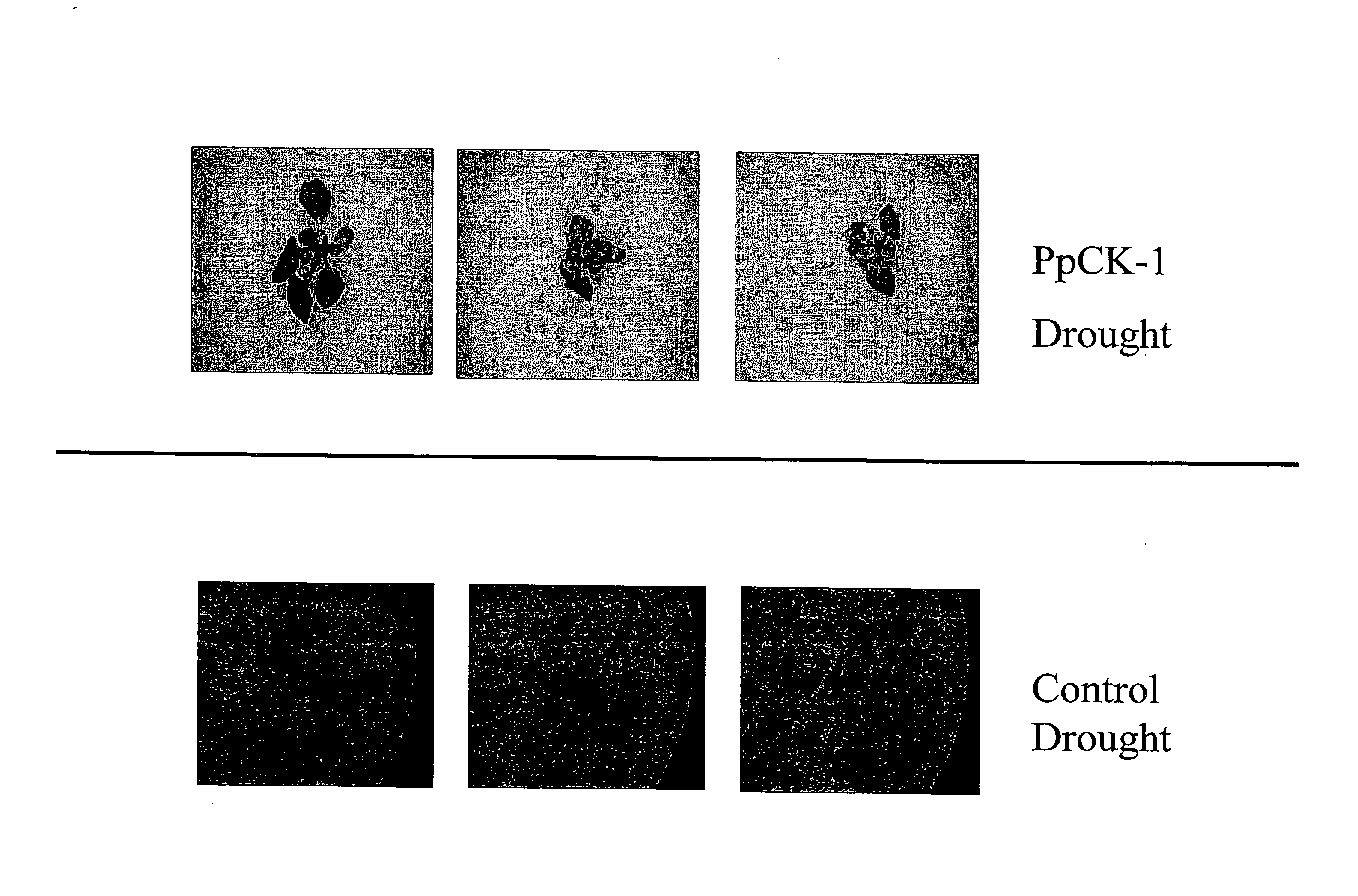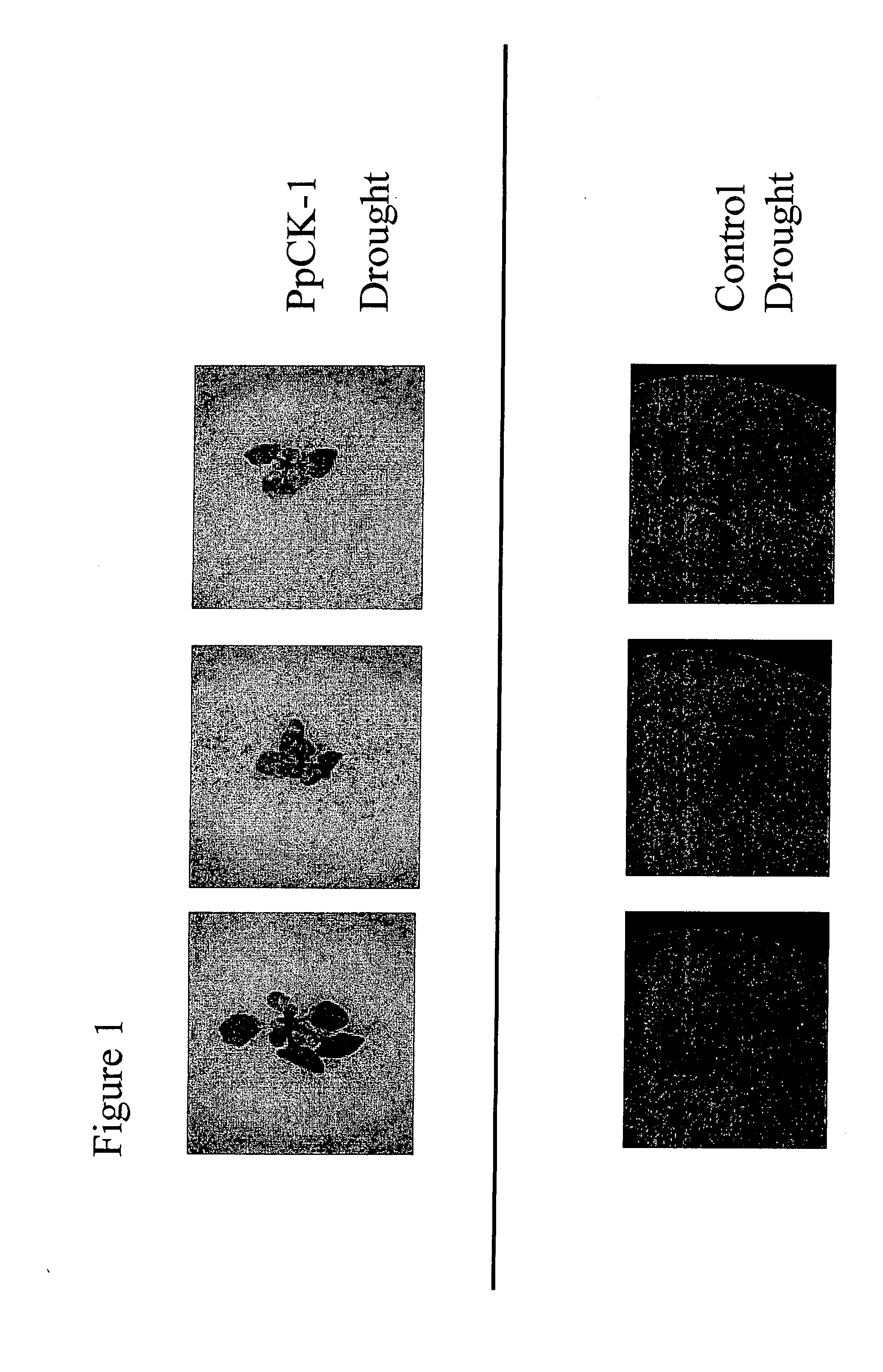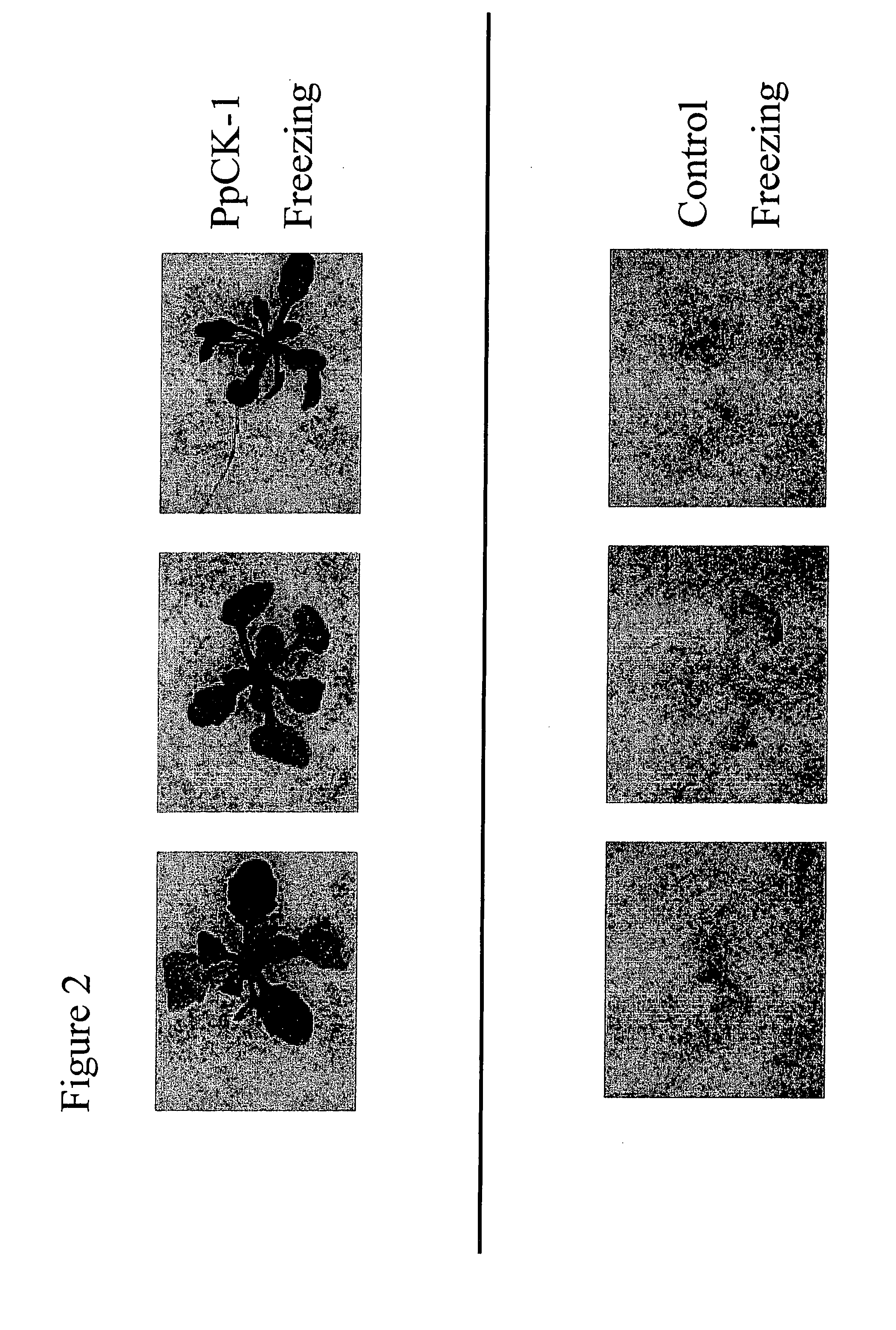Casein kinase stress-related polypeptides and methods of use in plants
a polypeptide and stress-related technology, applied in the field of nucleic acid sequences encoding polypeptides, can solve the problems of limiting the growth and productivity of plants, the effect the profound effects of cell death and consequently yield loss, so as to increase or decrease stress tolerance, increase the expression of cksrp nucleic acid, and increase the effect of stress toleran
- Summary
- Abstract
- Description
- Claims
- Application Information
AI Technical Summary
Benefits of technology
Problems solved by technology
Method used
Image
Examples
example 1
Growth of Physcomitrella patens Cultures
[0140] For this study, plants of the species Physcomitrella patens (Hedw.) B.S.G. from the collection of the genetic studies section of the University of Hamburg were used. They originate from the strain 16 / 14 collected by H.L.K. Whitehouse in Gransden Wood, Huntingdonshire (England), which was subcultured from a spore by Engel (1968, Am. J. Bot. 55, 438-446). Proliferation of the plants was carried out by means of spores and by means of regeneration of the gametophytes. The protonema developed from the haploid spore as a chloroplast-rich chloronema and chloroplast-low caulonema, on which buds formed after approximately 12 days. These grew to give gametophores bearing antheridia and archegonia. After fertilization, the diploid sporophyte with a short seta and the spore capsule resulted, in which the meiospores matured.
[0141] Culturing was carried out in a climatic chamber at an air temperature of 25° C. and light intensity of 55 micromols m−...
example 2
Total DNA Isolation from Plants
[0142] The details for the isolation of total DNA relate to the working up of one gram fresh weight of plant material. The materials used include the following buffers: CTAB buffer: 2% (w / v) N-cethyl-N,N,N-trimethylammonium bromide (CTAB); 100 mM Tris HCl pH 8.0; 1.4 M NaCl; 20 mM EDTA; N-Laurylsarcosine buffer: 10% (w / v) N-laurylsarcosine; 100 mM Tris HCl pH 8.0; and 20 mM EDTA.
[0143] The plant material was triturated under liquid nitrogen in a mortar to give a fine powder and transferred to 2 ml Eppendorf vessels. The frozen plant material was then covered with a layer of 1 ml of decomposition buffer (1 ml CTAB buffer, 100 μl of N-laurylsarcosine buffer, 20 μl of β-mercaptoethanol, and 10 μl of proteinase K solution, 10 mg / ml) and incubated at 60° C. for one hour with continuous shaking. The homogenate obtained was distributed into two Eppendorf vessels (2 ml) and extracted twice by shaking with the same volume of chloroform / isoamyl alcohol (24:1)....
example 3
Isolation of Total RNA and poly-(A)+ RNA and cDNA Library Construction from Physcomitrella patens
[0144] For the investigation of transcripts, both total RNA and poly-(A)+ RNA were isolated. The total RNA was obtained from wild-type 9 day old protonemata following the GTC-method (Reski et al., 1994, Mol. Gen. Genet., 244:352-359). The Poly(A)+ RNA was isolated using Dyna Beads® (Dynal, Oslo, Norway) following the instructions of the manufacturer's protocol. After determination of the concentration of the RNA or of the poly(A)+ RNA, the RNA was precipitated by addition of 1 / 10 volumes of 3 M sodium acetate pH 4.6 and 2 volumes of ethanol and stored at −70° C.
[0145] For cDNA library construction, first strand synthesis was achieved using Murine Leukemia Virus reverse transcriptase (Roche, Mannheim, Germany) and oligo-d(T)-primers, second strand synthesis by incubation with DNA polymerase I, Klenow enzyme and RNAseH digestion at 12° C. (2 hours), 16° C. (1 hour), and 22° C. (1 hour). ...
PUM
| Property | Measurement | Unit |
|---|---|---|
| humidity | aaaaa | aaaaa |
| temperature | aaaaa | aaaaa |
| weight | aaaaa | aaaaa |
Abstract
Description
Claims
Application Information
 Login to View More
Login to View More - R&D
- Intellectual Property
- Life Sciences
- Materials
- Tech Scout
- Unparalleled Data Quality
- Higher Quality Content
- 60% Fewer Hallucinations
Browse by: Latest US Patents, China's latest patents, Technical Efficacy Thesaurus, Application Domain, Technology Topic, Popular Technical Reports.
© 2025 PatSnap. All rights reserved.Legal|Privacy policy|Modern Slavery Act Transparency Statement|Sitemap|About US| Contact US: help@patsnap.com



